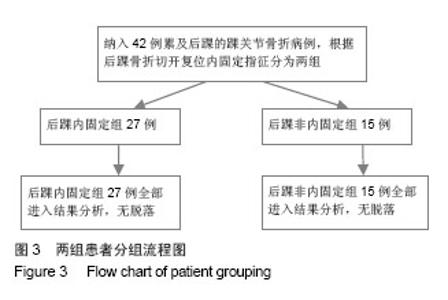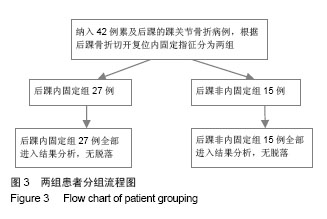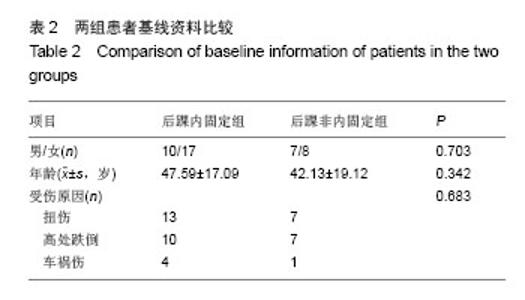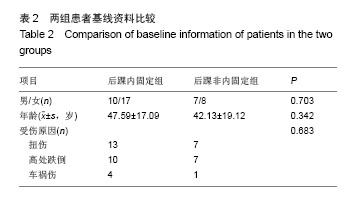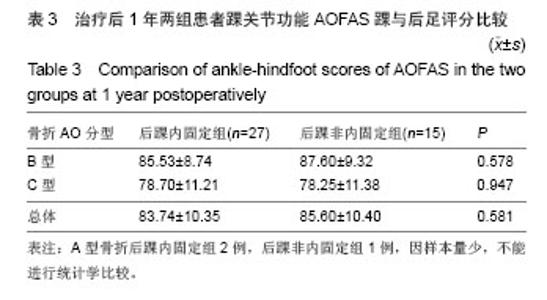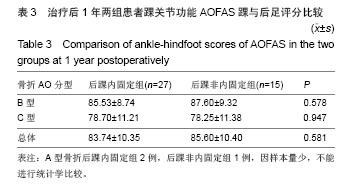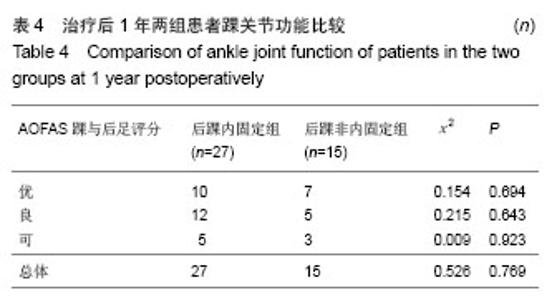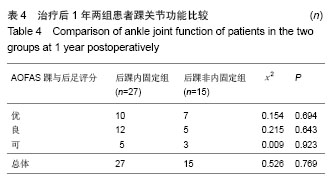| [1]Gardner MJ, Brodsky A, Briggs SM, et al. Fixation of posterior malleolar fractures provides greater syndesmotic stability. Clin Orthop Relat Res. 2006;(447):165-171.
[2]Jaskulka RA,Ittner G.Fractures of the posterior tibial margin:their role in the prognosis of malleolar fractures. J Orthop Trauma. 1989;29(11):1565-1570.
[3]Haraguchi N,Haruyama H,Toga H,et al.Pathoanatomy of posterior malleolar fractures of ankle.J Bone Joint Surg Am. 2006;88(5):1085-1092.
[4]Miller AN,Carroll EA,Parker RJ,et al.Posterior malleolar stabilization of syndesmotic injuries is equivalent to screw fixation.Clin Orthop Relat Res. 2010;468:1129-1135.
[5]Gardner MJ,Streubel PN,McCormick JJ, et al.Surgeon practices regarding operative treatment of posterior malleolus fractures. Foot Ankle Int. 2011;32:385-393.
[6]Langenhuijsen JF,Heetveld MJ,Ultee JM,et al.Results of ankle fractures with involvement of the posterior tibial margin. J Trauma. 2002;53(1):55-60.
[7]Goreham-Voss CM, McKinley TO, Brown TD. A finite element exploration of cartilage stress near an articular incongruity during unstable motion. J Biomech. 2007; 40(15): 3438-3447.
[8]Jaskulka RA,Ittner G,Schedl R. Fractures of the posterior tibial margin: their role in the prognosis of malleolar fractures. J Trauma.1989;29:1565-1570.
[9]Kitaoka HB, Alexander IJ, Adelaar RS, et al. Clinical rating systems for the ankle-hindfoot,midfoot,hallux,and lesser toes.Foot Ankle Int. 1994;15(7):349-353.
[10]Harper MC,Talar S.The stabilizing role of the medical,lateral, and posterior ankle structures.Clin Orthop. 1990;257: 177-183.
[11]Raasch WG,Larkin JJ,Draganich LF.Assessment of the posterior mallenlus as a restraint to posterior subluxation of the ankle.J Bone Joint Surg Am. 1992;74(8):1201-1206.
[12]汤荣光,盛为,戴尅戎,等.后踝骨折以关节负重区影响的实验研究[J].中华创伤杂志,1999,15(3):203-205.
[13]The contribution of the posterior malleolus. J Bone Joint Surg (Am). 1991;73(3): 347-351.
[14]俞光荣,赵宏谋,杨云峰,等.切开复位内固定治疗后踝骨折的疗效分析[J].中国修复重建外科杂志,2011,25(7):774-777.
[15]Broos PL, Bisschop AP. Operative treatment of ankle fractures in adults:correlation between types of fracture and final results. Injury.1991;22:403-406.
[16]文哲,郑晓明.后踝骨折的生物力学分型及临床应用[J].骨与关节损伤杂志,2004,12(19):812-814.
[17]Gardner MJ,Brodsky A,Briggs SM,et al.Fixation of posterior malleolus fracture provides greater syndesmotic stability. Clin Orthop Relat Res. 2006;(447):165-171.
[18]Miller AG, Margules A.Risk factors for wound complications after ankle fracture surgery. J Bone Joint Surg Am. 2012; 94(22):2047-2052.
|
